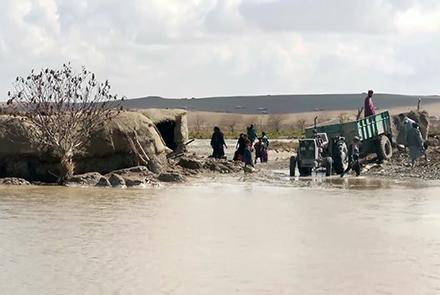A new report by the United Nations Office for the Coordination of Humanitarian Affairs (OCHA) released on Tuesday says that thousands of families have been affected by recent flash floods in the southern provinces of Kandahar and Helmand provinces and that they require humanitarian assistance.
The report says that 4,698 households and more than 33,000 people have been identified as requiring humanitarian assistance as a result of flooding in Kandahar province.
The report adds that 1,855 houses have been destroyed and 2,841 houses have been partially damaged by flooding in the southern provinces including Kandahar city.
There was further rain on 10 March, although no new flooding incidents have been reported, the report says.
According to the report, 1,092 families have been verified as requiring humanitarian assistance as a result of the flooding that began on 2 March 12, 2019 in four districts of Helmand province, including Nahr-e-Saraj, Nawa-e-Barakzai, Lashkragah and Nad Ali.
The report adds that a further 1,320 families were affected by flash floods in Khoshkaba area in Nahr-e-Saraj district.
In western Farah province, the report says, 3,205 households have been identified as affected by the floods, and requiring humanitarian assistance.
Of these households, the report says, 1,601 homes have been destroyed and 1,604 have been partially damaged.
According to inter-agency assessment teams, 85 percent of the flood-affected areas were assessed as of 10 March.
On 9 March, heavy rain struck Muqur district, of western Badghis province, resulting in flash floods that damaged infrastructure and agricultural land in three villages, Sangi Zard, Cheshma Duzdak and Kalanzai.
Wheat, cumin, pea and pistachio crops have been destroyed by the flood waters, and irrigation canals have been damaged, the report says.
According to the report, water systems including wells, water catchments and water reservoirs have been destroyed. It has been reported that in some affected areas, flood waters are 50cm high, and there is the risk that poorly constructed homes may collapse.


